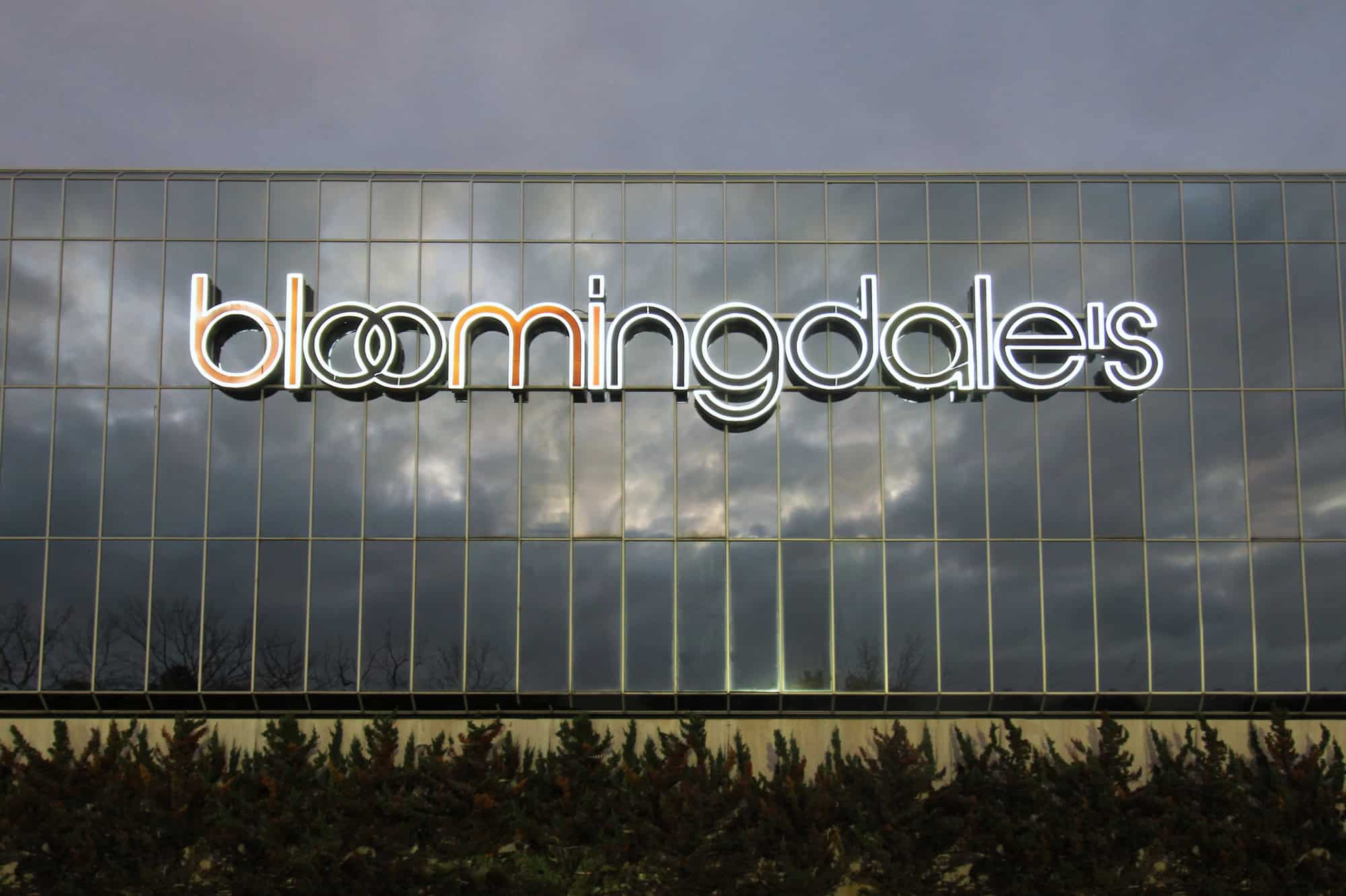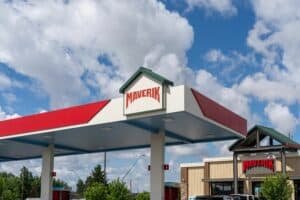
kasasagiproductions@yahoo.com/Depositphotos.com
October 13, 2025
How Seriously Are Department Stores Struggling With Gen Z?
In a recent examination of department stores’ cross-generational appeal with shoppers, CNBC’s Jessica Dickler and Ana Teresa Sola made the case that not only were older Americans showing continued interest in in-store shopping at department stores, but that despite continued appeal to Gen Z by these retailers, there remained a divide between the two cohorts.
Beginning by noting that department stores could be losing a bit of luster with younger Americans, the authors pivoted to discuss some of the reasons why boomers were still showing up to spend, citing Circana’s chief retail advisor Marshal Cohen on the subject.
“[On comparatively generous return policies, promos, and discounts common to department stores] If you can learn the benefits of what a store brings you, it creates a much greater experience,” Cohen said, also noting that the option of having a sales associate wait on you, learn your stated needs, and then perhaps locate and ship a desired item to you at no additional cost, “That’s a big perk.”
By contrast, Cohen noted, younger shoppers may adopt a mindset of “I don’t want to shop where my mother shops.”
Department Stores (Notably Macy’s and Bloomingdale’s) Show Persistent Interest From Older Americans
Consumer Edge data was pulled by Dickler and Sola to underscore one point: Concerning these two stores, the bulk of customers shopping there are over the age of 45. Further, per a March Capital One report, boomers are far more likely to report that brick-and-mortar shopping is their most common way of purchasing, greatly outpacing the percentage of Gen Z respondents who indicated the same.
“The younger generation grew up online. The challenge for department stores is to break that paradigm,” Cohen concluded.
And with social media, in particular TikTok, creating a paradigm TD Cowen retail analyst Oliver Chen described as “the tiktokification of retail” for Gen Z consumers, Dickler and Sola pointed to the problems posed by relying too heavily on e-comm options.
Bracketing, which could add both excessive costs and time wastage in addition to environmental concerns, was one — as was the notable increase in stricter return policies coming online from e-commerce players, perhaps, at least partially, in response to the aforementioned practice.
On the other hand, however, a number of department stores have bucked this trend in a move to create differentiation: According to the AARP, the top five retailers on this score are Costco, Kohl’s, Nordstrom, Target, and Walmart, all known primarily for their physical footprints, even if online shopping options are on the table.
“There are some savings opportunities that you have when you shop in person that you probably wouldn’t have online,” said Edgar Dworsky, founder of ConsumerWorld.org, per CNBC.
Bloomingdale’s Success Shows Luxury-Heavy Assortments Faring Better Than Traditional Inventory for Department Stores
Following a quick profile of personal stylist Nancy Quinn of Bloomingdale’s flagship in New York City — who noted that a depth of customer service set their store apart from online competitors, but who also noted that “A lot of younger people are shopping online” despite her attentive and personalized services being free to clients — the CNBC authors moved to note that while Macy’s continued to struggle (alongside JCPenney), Bloomingdale’s was showing resilience due to a “focus on the luxury brands that appeal to higher-income shoppers.”
“Selective higher-end stores” are outpacing the competition, in part because “middle- and lower-income consumers have been disproportionately negatively impacted by the rising cost of necessities,” said TD Cowen’s Chen.
There may be some hope for brick-and-mortar across age cohorts, however, despite inventory and pricing headwinds associated with physical retail, exacerbated by the ongoing tariff situation.
“It is ironic because everybody does love stores and humans want connection,” Chen added.
Discussion Questions
What can department stores do to rekindle interest in shopping their physical presence versus opting for purchasing online (particularly for Gen Z)? Is the divide strictly based on native familiarity with tech platforms?
Is it accurate to say that department stores holding more high-end brands in inventory are reaping the rewards? In your opinion, why is this?
Is the proclivity for the Gen Z shopper toward online shopping versus physical shopping overstated, to your mind? Why or why not?
Poll
BrainTrust
Scott Benedict
Founder & CEO, Benedict Enterprises LLC
Georganne Bender
Principal, KIZER & BENDER Speaking
Cathy Hotka
Principal, Cathy Hotka & Associates
Recent Discussions







Mainstream department stores are not even on the radar of many Gen Z consumers as places to shop. So, it is safe to say they are missing out on a big chunk of consumer spending – and an important one as these are future consumers. The problem is not with the concept per se (after all Target and Amazon are department stores of a kind). The problem is with the offer and proposition not being relevant. Refreshing the range and shopping experience is probably the way to go, but a lot of department stores need to fix the basics before doing that.
Amen.
And stores like Target, Kohl’s and Walmart don’t offer top quality customer service, at least not the service level of good department stores.
Every day we preach – or at least hear – “omnichannel”, then along comes a question like this: why should a department store , or any store really , care which format people shop at, just as long as they shop at (at least) one of their formats? The answer, of course, is they shouldn’t; they care because people aren’t buying from them…period. What can they do to revive interest? Not much, judging by the unending decline they’ve been in for the entire lifetime of everyone who will comment here today.
Department stores can rekindle Gen Z’s interest in physical shopping by transforming stores from transactional spaces into experiential destinations. The issue isn’t simply that younger shoppers are digital natives—it’s that most department stores feel outdated and disconnected from their lifestyle and values.
To win Gen Z back, retailers need to blend digital and physical seamlessly through interactive pop-ups, influencer collaborations, localized assortments, and social-shareable experiences that make stores worth visiting.
Integrating mobile checkout, social discovery, and AR try-ons can bridge the convenience gap between online and offline shopping. Relevant services like personal shoppers, style advisors, makeup consultants, etc. would differentiate an integrated omnichannel experience that would appeal to Gex Z and beyond.
Stores that carry more high-end or luxury brands are indeed performing better, largely because premium assortments give shoppers a reason to come in-store. Luxury brands offer both exclusivity and social cachet—two things Gen Z values highly—and allow department stores to differentiate from mass competitors while sustaining higher margins.
The notion that Gen Z prefers online shopping exclusively is overstated. They still enjoy shopping in stores that offer authenticity, community, and inspiration. When the physical experience feels unique, aligns with their values, and adds something they can’t get on a screen, Gen Z shows up. The opportunity for department stores lies in creating those differentiated, immersive experiences that connect emotionally and culturally—not just commercially—with younger consumers.
Shein, Temu, TikTok, yes. Department stores? No. No surprise here.
Department stores are stuck in an identity crisis disguised as a generational preference issue. True, they’re not on Gen Z’s radar for good reasons: what job is a department store supposed to do that Amazon, Shein, or a TikTok Shop can’t do faster, cheaper, or with more cultural currency? Department stores need to make a brutal choice: become luxury curators (the Bloomingdale’s play) or become value aggregators (the Costco play). The muddy, bloody middle, where most traditional department stores tread, is a slow-motion death by a thousand cuts, regardless of tech innovations or going back to basics.
Girding my loins for the comments that include “physical retail is dead.”
It would be really nice if all of these surveys and examinations could make up their minds. Everything I have read recently points to Generation Z preferring to shop in physical stores. Perhaps they just have not experienced the service in department stores that older customers enjoy. You can blast Macy’s all day long, but you can still find associates there who provide old fashioned service there. I’ll sit down and wait for that survey.
Some of the wording of the article felt ‘off’ to me too. Gen Z (P13-28) has been said to like the sociability of store shopping…in line with lifestage/hanging out/ looking for ways to post on social. [this topic seems throw back to either/or channel, which does not exist. Answer is still: all]
Bloomingdales & Macys are hard to answer in same breath…
As Macys reputation is very old school & Bloomingdales is more metro geo/upscale, with nowhere near B&M coverage of broad base dept chains
Bloomingdales: Full-line stores: 32, Outlet: 21, Bloomie’s: 4. Core geos: CA: 28 stores (29%), NY: 17(18%); NJ: 12(12%).
Other comments do not seem youth oriented:
““benefits of what a store brings you, it creates a much greater experience… option of having a sales associate wait on you, learn your stated needs”. Shoppers (of all ages) are more self directed. Needing help in a changing room might still be a thing, for those who don’t do the buy/try on at home/return the rest. Learning a shopper’s needs implies repetition of communication btwn exact same people. (ie same store location, same hrs of sales staff working)
Dept stores of all types don’t have those “generous” return policies anymore. eg Macys went from 90 days to 30; Last Act from 30 to non returnable. Plus a special headache of returns for 3rd party mktplace sellers.